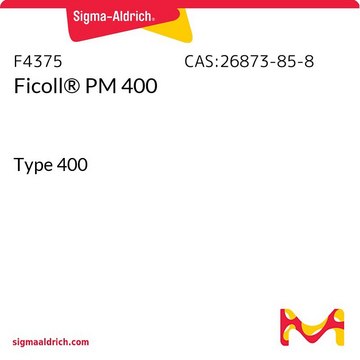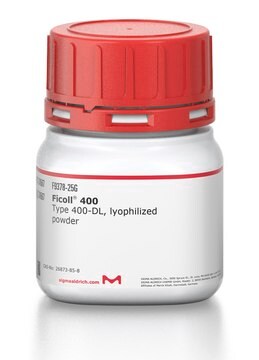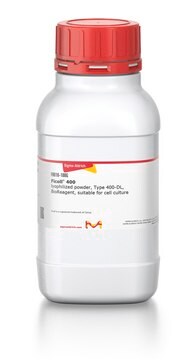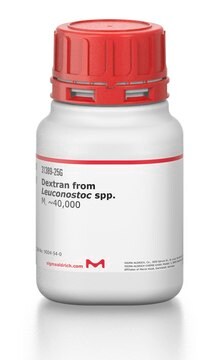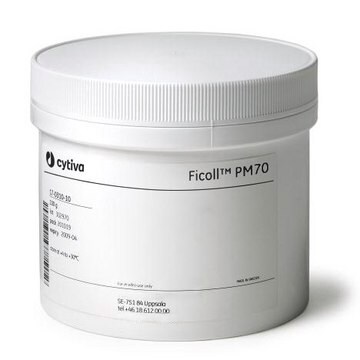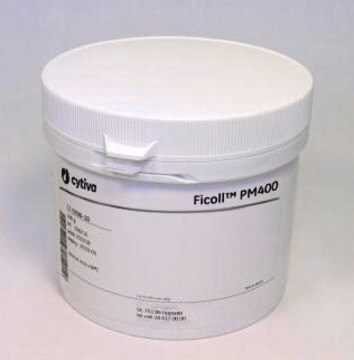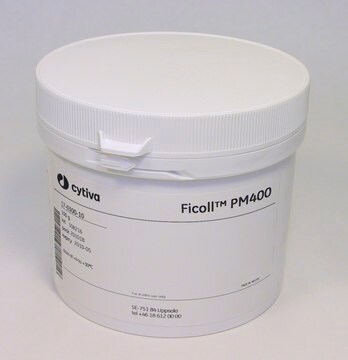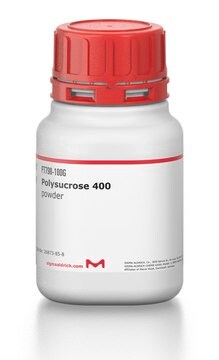F2878
Ficoll® PM 70
Type 70
Synonim(y):
Poly(sucrose-co-epichlorhydrin)
About This Item
Polecane produkty
typ
Type 70
Poziom jakości
Formularz
powder
masa cząsteczkowa
~70,000
kolor
white
rozpuszczalność
H2O: soluble 100 mg/mL, clear to slightly hazy, colorless to faintly yellow
Szukasz podobnych produktów? Odwiedź Przewodnik dotyczący porównywania produktów
Opis ogólny
Zastosowanie
- as a macromolecule in a comparative study to evaluate its effect in vitrification solutions
- as a supplement in the vitrification solution for the vitrification procedure of oocytes
- as a component of low serum medium for human lung fibroblast cell culture to promote a crowded environment
Działania biochem./fizjol.
Inne uwagi
Informacje prawne
Kod klasy składowania
11 - Combustible Solids
Klasa zagrożenia wodnego (WGK)
WGK 3
Temperatura zapłonu (°F)
Not applicable
Temperatura zapłonu (°C)
Not applicable
Środki ochrony indywidualnej
Eyeshields, Gloves, type N95 (US)
Wybierz jedną z najnowszych wersji:
Masz już ten produkt?
Dokumenty związane z niedawno zakupionymi produktami zostały zamieszczone w Bibliotece dokumentów.
Klienci oglądali również te produkty
Protokoły
Ficoll 400® to niejonowy polimer o wysokiej hydrofilowości i rozpuszczalności w wodzie, odpowiedni do różnych zastosowań biologicznych.
Nasz zespół naukowców ma doświadczenie we wszystkich obszarach badań, w tym w naukach przyrodniczych, materiałoznawstwie, syntezie chemicznej, chromatografii, analityce i wielu innych dziedzinach.
Skontaktuj się z zespołem ds. pomocy technicznej